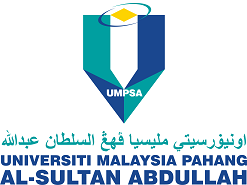Aging Dynamics of Bio-Coagulants: Implications for Oily Wastewater Treatment Efficiency
DOI:
https://doi.org/10.15282/jceib.v9i2.9226Keywords:
Oily wastewater, Bio-coagulant, Chitosan, G-Treat, Wastewater TreatmentAbstract
Inadequate treatment of oily wastewater discharge can contribute to an increase in the levels of both biological oxygen demand (BOD) and chemical oxygen demand (COD) in the water. Various studies have highlighted the effectiveness of natural bio-coagulants in particular chitosan as an alternative to the chemical coagulants available in the market. However, minute studies have been reported in discussing the correlation between the aging effect of the bio-coagulant and its performance. Thus, this paper presents research on the aging effect of bio-coagulants for treating oily wastewater. In this study, G-Treat was used as the bio-coagulant, which was produced from chitosan powder, acetic acid, and deionized water. The experimental procedure started by filling 500 mL of oily wastewater into a beaker. Next, 10 wt. % of G-Treat was added into the beaker for the jar test, which was mixed for 30 min at 150 rpm, followed by 2 hours settling time. Then, the mixture was separated using filter paper. The analysis of oily wastewater characteristics was conducted using five types of analyses, which are pH, chemical oxygen demand (COD), biological oxygen demand (BOD), total suspended solids (TSS), and oil and grease (O&G) under the parameters of days (0–7 days), weeks (0–6 weeks), and months (0–3 months). From the result, the best performance of G-Treat was achieved at the optimum parameters during week 2, with 33.16%, 65.75%, 35.73%, 28.58%, and 0% removal of pH, COD, BOD, TSS, and O&G, respectively. In conclusion, the studied bio-coagulant demonstrated higher removal of pH, COD, BOD, TSS, and O&G at optimum parameters, and eventually, the level of effectiveness will drop.
Downloads
Published
Issue
Section
License
Copyright (c) 2023 The Author(s)

This work is licensed under a Creative Commons Attribution-NonCommercial 4.0 International License.



